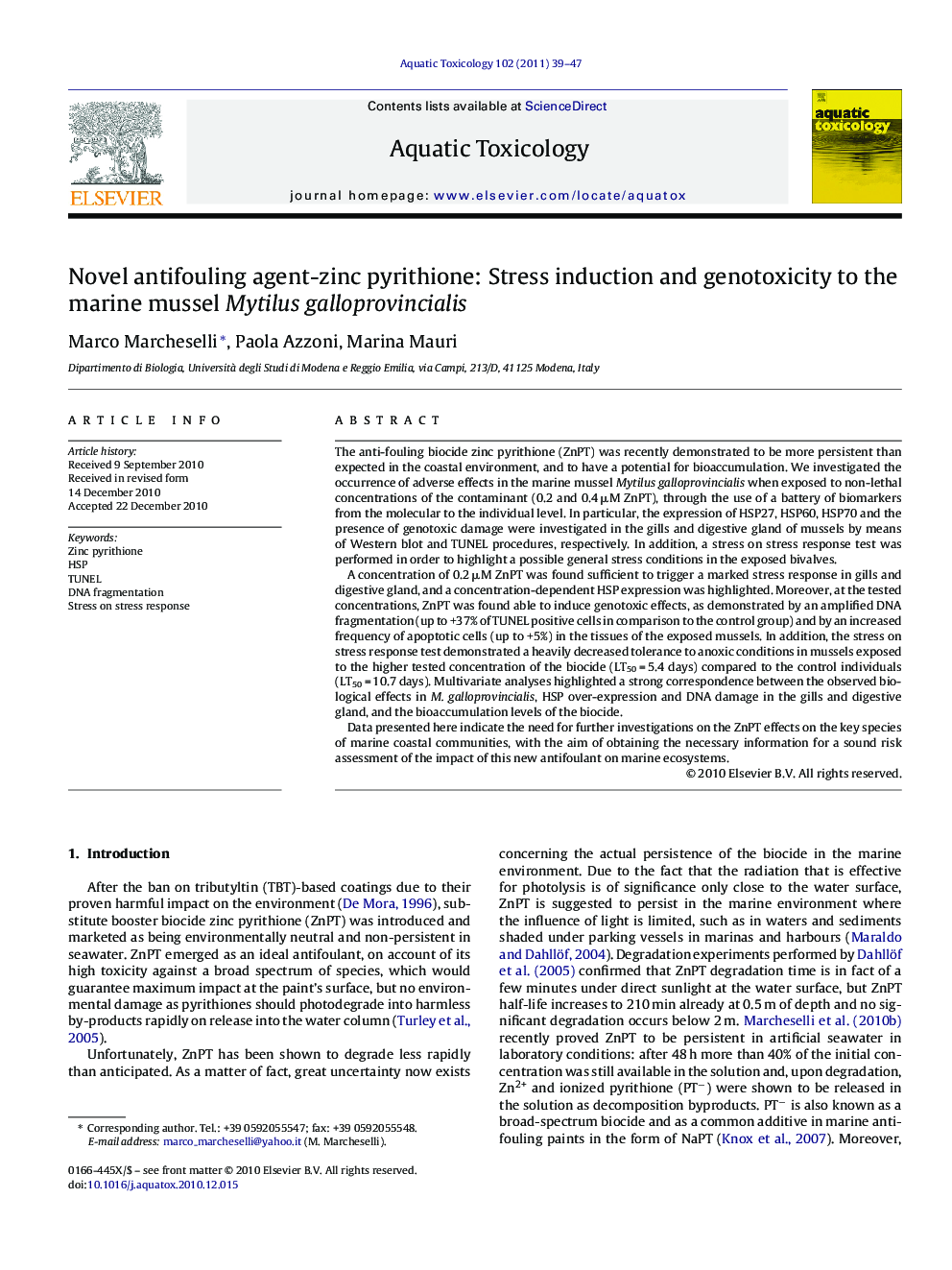| Article ID | Journal | Published Year | Pages | File Type |
|---|---|---|---|---|
| 4529954 | Aquatic Toxicology | 2011 | 9 Pages |
The anti-fouling biocide zinc pyrithione (ZnPT) was recently demonstrated to be more persistent than expected in the coastal environment, and to have a potential for bioaccumulation. We investigated the occurrence of adverse effects in the marine mussel Mytilus galloprovincialis when exposed to non-lethal concentrations of the contaminant (0.2 and 0.4 μM ZnPT), through the use of a battery of biomarkers from the molecular to the individual level. In particular, the expression of HSP27, HSP60, HSP70 and the presence of genotoxic damage were investigated in the gills and digestive gland of mussels by means of Western blot and TUNEL procedures, respectively. In addition, a stress on stress response test was performed in order to highlight a possible general stress conditions in the exposed bivalves.A concentration of 0.2 μM ZnPT was found sufficient to trigger a marked stress response in gills and digestive gland, and a concentration-dependent HSP expression was highlighted. Moreover, at the tested concentrations, ZnPT was found able to induce genotoxic effects, as demonstrated by an amplified DNA fragmentation (up to +37% of TUNEL positive cells in comparison to the control group) and by an increased frequency of apoptotic cells (up to +5%) in the tissues of the exposed mussels. In addition, the stress on stress response test demonstrated a heavily decreased tolerance to anoxic conditions in mussels exposed to the higher tested concentration of the biocide (LT50 = 5.4 days) compared to the control individuals (LT50 = 10.7 days). Multivariate analyses highlighted a strong correspondence between the observed biological effects in M. galloprovincialis, HSP over-expression and DNA damage in the gills and digestive gland, and the bioaccumulation levels of the biocide.Data presented here indicate the need for further investigations on the ZnPT effects on the key species of marine coastal communities, with the aim of obtaining the necessary information for a sound risk assessment of the impact of this new antifoulant on marine ecosystems.
